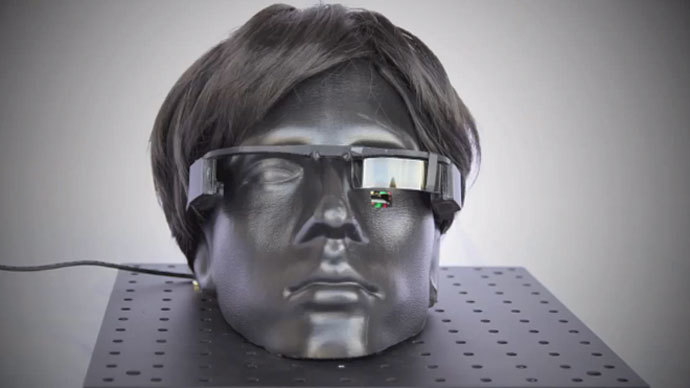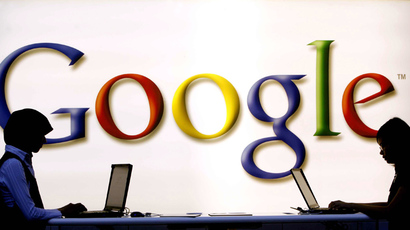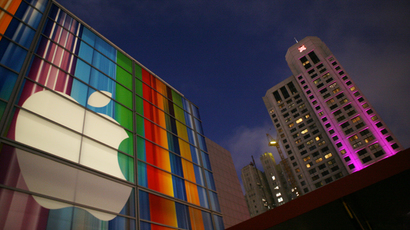240" TV in a contact lens: Revolutionary eyewear rivaling Google Glass to be unveiled

Google Glass has a rival: Nano-tech contact lenses that work with a pair of glasses and provide wearers with a virtual canvas on which any media can be viewed or application run, projected onto human eyes, are set to be unveiled in the US.
The high-tech contact lens is due to be previewed at the Consumer
Electronics Show in Las Vegas next week, becoming a rival to
"wearable computing" Google Glass, the futuristic glasses that
can shoot video or photos literally with a wink of an eye.
The platform, dubbed “iOptik,” is the brainchild of Washington-based group Innovega, whose
breakthrough eyewear system is comprised of two key elements:
flat-panels or micro-projectors that are integrated into
eyeglasses that provide a gateway for any available media; and
iOptik contact lenses that not only deliver a view of near-eye
rich media, but given that one in two humans require some form of
vision correction an improved view of the environment as well.
The contact lenses can be worn in the usual fashion, with or
without the Innovega eyewear. When the eyeglasses, fitted with
micro-projectors, are worn, any media can be instantly streamed
onto a transparent lens, and the wearer's view of their
surroundings is not hampered in any way. "The benefit of
simultaneously offering vision correction is particularly
important to Asian consumer segments where the prevalence of
nearsightedness is near twice that of their non-Asian
counterparts," Innovega co-founder and CEO Steve Willey
said.

The company has thus far been funded by the National Science Foundation (NSF), the Defense Advanced Research Projects Agency (DARPA), and by an undisclosed Asian company, according to CNET.com. Willey explained that Innovega was founded to tackle the problem that has proved to discourage consumers across the world, namely that both the quality and quantity of digital media available from mobile devices often exceeds the capability of tiny mobile displays.
"Whatever runs on your smartphone would run on your eyewear," Willey told CNET. "At full HD. Whether it's a window or immersive."
According to Willey, the iOptik contact lens-based approach "has broken this bottleneck," delivering high-performance imagery from compact eyewear by eliminating all the usual magnifying optics from digital eyewear and integrating them into a nano-tech contact lens. The novel contact lens enhances vision and enables wearers to better visualize their digital world. It allows light from the display to pass through the center of the pupil, and light from the surrounding environment to pass through the outer portion of the pupil. Willey was quoted as saying that the contact lenses could generate displays with a screen size "equivalent to a 240-inch television, viewed at a distance of 10 feet."

Right now, the iOptik system syncs with Android smartphones and,
according to Willey, will be able to allow developers to design
specific tools for any devices in which the iOptik system could
be used.
Technology companies across the world have been fighting for a
place in the wearable gadgets market, becoming a key growth area.
However, when Google Glass was unveiled, many worried that should
the device become widely used, privacy would be breached with the
help of covert recording. A "Stop the Cyborgs” campaign has been
launched in the US, designed "to stop a future in which
privacy is impossible and where the iron cage of surveillance,
calculation and control pervades every aspect of life."














